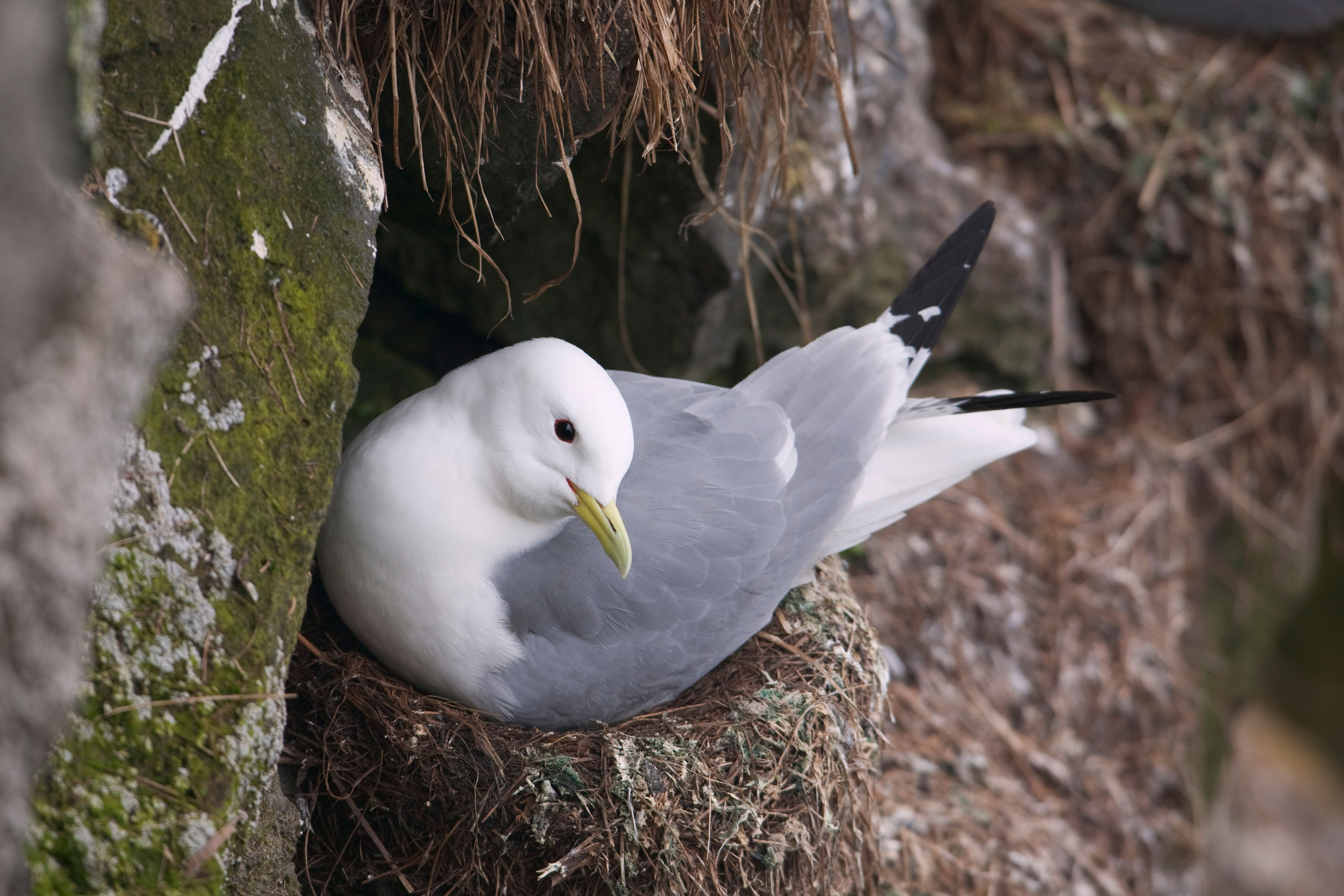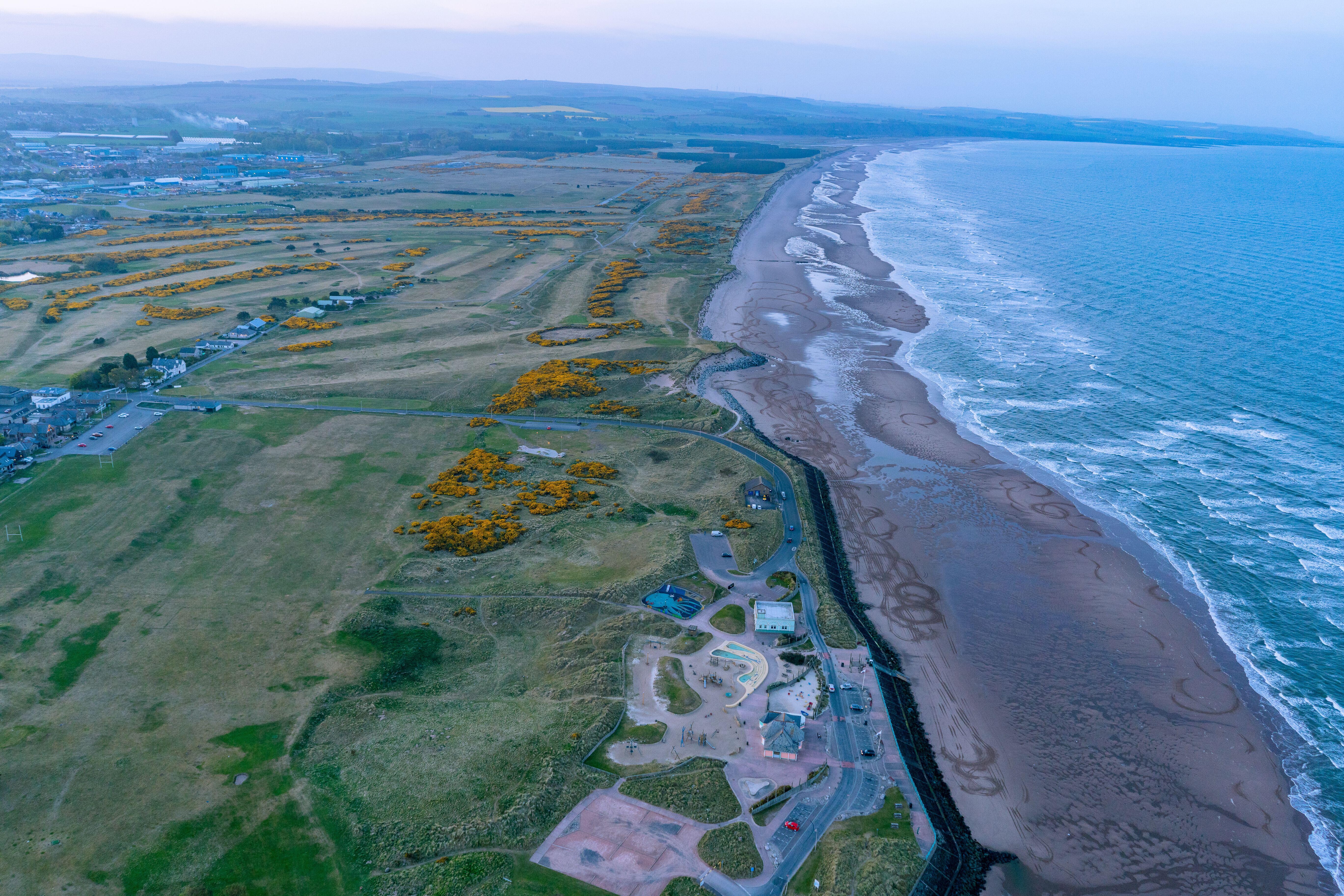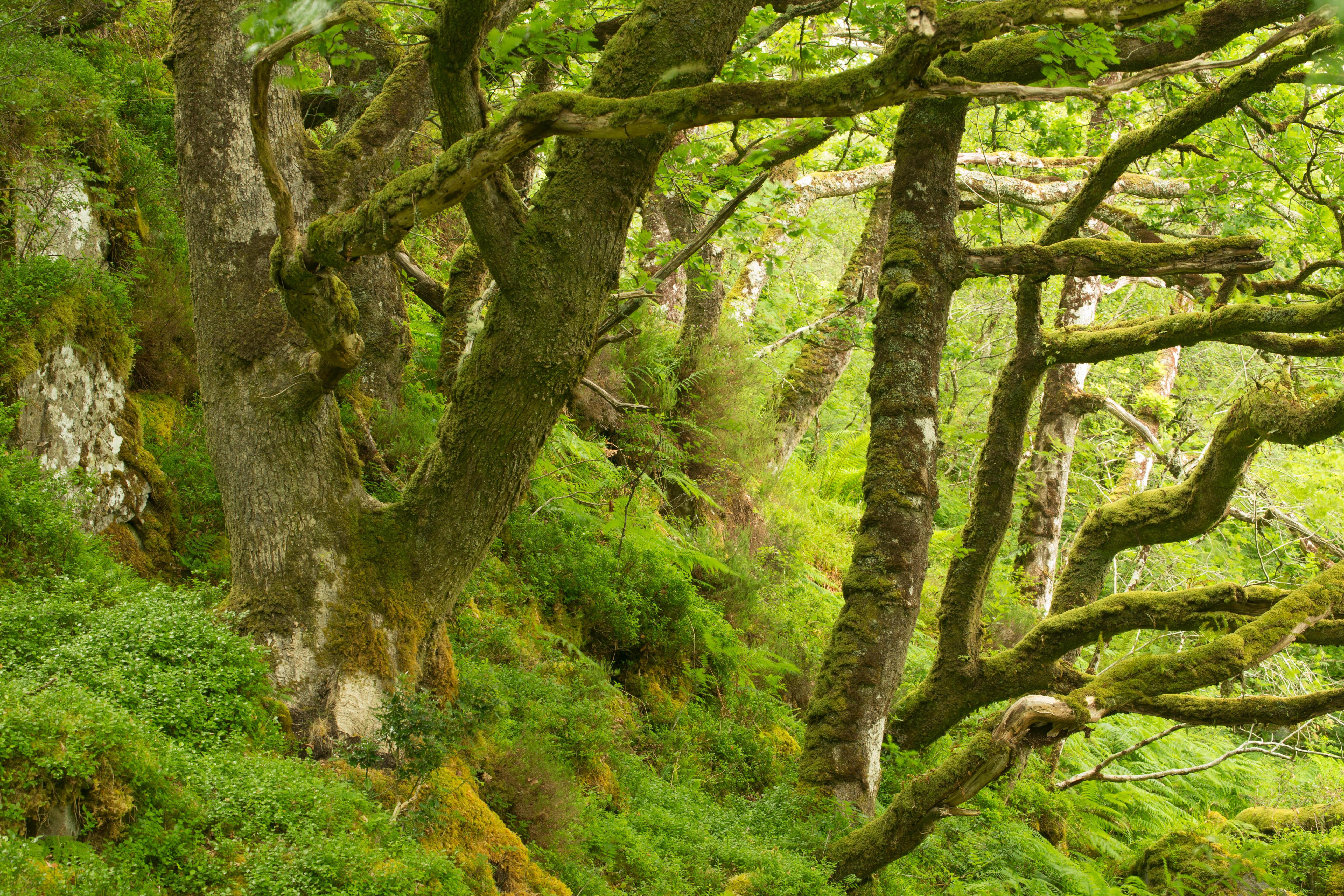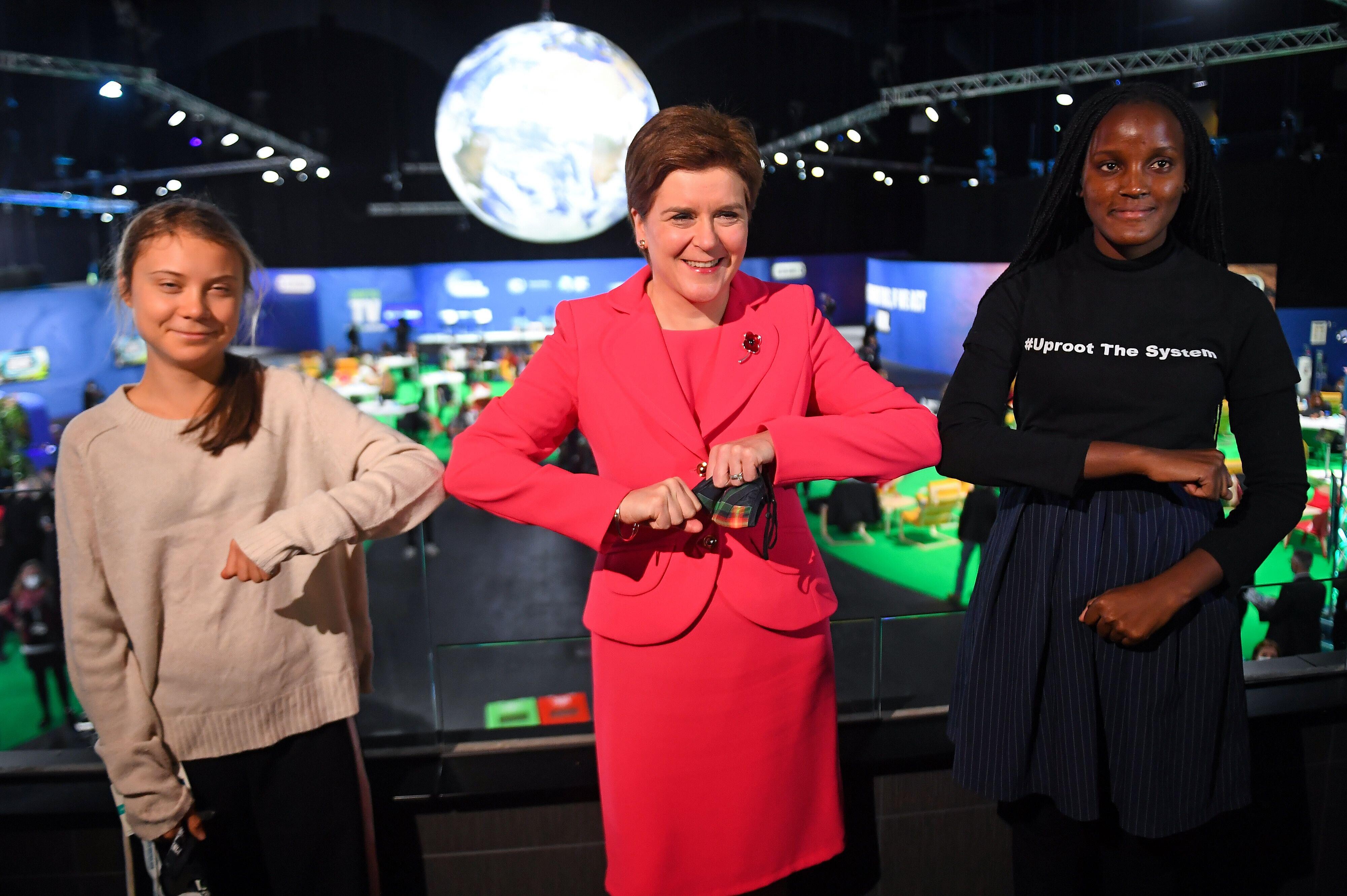Disappearing Scotland: The nation's fauna, flora, and natural landscapes are vanishing
The silence that hangs over Shetland’s cliffs is not just one of peace, and quiet – but of loss and absence.
On Scotland’s north-eastern fringe, the islands’ cliffs, once teeming with a cacophony of noisy bird life, have fallen to a dull hum of lapping waves – Shetland’s famous landscape is now bereft of the seabirds that once filled the air with screeches and squawks.
A particular loss to the archipelago has been the colonies of kittiwakes – so-called because of their distinctive ‘kitti-wa-a-ak’ squawk – which have vanished from parts of Shetland completely.
Kittiwake populations in the UK have declined by 50 per cent between 2000-2018, with some smaller colonies in Shetland disappearing and declines of up to 98 per cent on the isle of Noss – part of the Shetland archipelago - since 2010.
This is a continuation of a steep decline from more than 10,000 pairs on Noss in 1970.
Beatrice Wishart, the Liberal Democrat MSP for Shetland, remembers the time when the sea birds were a popular attraction for the island’s inhabitants.
“A visit to seabird colonies is a regular spring/summer activity for many Shetlanders, and something I’ve done most of my life, as a child, a parent and now a grandparent,” Wishart said.
“Sumburgh Head is easy to access and from there you could witness the sights and sounds of many different bird species.
“Kittiwakes could be seen nesting high up the cliffs.
“Now they are quiet, and I didn’t see any kittiwakes when I was at Sumburgh this year - sadness is the overwhelming emotion.”
The kittiwake is one of the first British birds to be added to the IUCN’s (International Union for Conservation of Nature) Red List, meaning it is facing global extinction.
It builds nests of seaweed, mud and guano that it sticks to the side of steep cliff faces above the sea, providing easy access to their preferred prey – sandeels.
Around Shetland, however, the sandeel population has plummeted due to warming sea temperatures driving the sandeel’s staple diet – krill and plankton – into deeper water.
“I was warden on Noss National Nature Reserve in Shetland in 1989,” says Eileen Stuart, the deputy director of nature and climate change at NatureScot.
“My memories are of some of the cliffs being full of kittiwakes. Their name comes from their evocative call 'kittee-wa-aaake, kittee-wa-aaake, so not hearing that as you approach the cliffs makes me feel really sad, that we are losing something very special from our environment.
“The drop in numbers of kittiwakes is a result of rising sea temperatures affecting plankton, which is the main food of small fish called sandeels on which kittiwakes depend.
“The populations of kittiwakes are spread across many colonies in Scotland and elsewhere in Europe.
“The changing climate is affecting fish stocks in different ways and so populations of kittiwakes are likely to fare differently across the globe.”
According to the Royal Society for the Protection of Birds’ ‘State of Nature 2019’ report, an estimated one in nine Scottish species are at risk of extinction due to climate change, including the red squirrel and capercaillie, with further species under increased pressure, including mountain hares, puffins, Arctic skuas and Scottish wildcats.
Of the 6,413 species found in Scotland that have been assessed using the IUCN Regional Red List criteria, and for which sufficient data were available, 642 (11 per cent) are currently threatened with extinction from Great Britain (Scotland-specific assessments are not available).
The war against climate change – with its own combatants, casualties and innocent bystanders – has been waging long before the human world took notice, and on Shetland’s once populous cliffs it would be hard to think of a more fitting site – on the edge of the world - for a memorial to the damage wreaked on nature by human consumption.
On the isle of Noss, a funeral silence already hangs –marking the site of Scotland’s first lost battle with man-made climate change.

A black-legged kittiwake nesting
The country’s flora and fauna are not the only aspect under threat – Scotland itself is slowly disappearing.
According to the Scottish Government’s Dynamic Coast project, £1.2bn of infrastructure and property will be at risk by 2050 due to coastal erosion.
Dynamic Coast’s research summary report warns: “At least £20bn of assets (road, rail & residential property) lie within 50m of our coast.
“Of this £5bn of assets are protected by artificial defences, whilst £ 14.5bn are protected by natural defences.
“Under a cautious risk assessment (where both artificial and natural defences aren’t maintained) and a high emissions future, an estimated £1.2bn of assets may be at risk of erosion by 2050.
“Under a comparable low emissions future, around £814m of assets may be at risk by 2050.
“An optimistic assessment (where artificial defences are assumed to be maintained) has also been carried out.
“The avoided damage costs of a low emissions future compared with a high emissions future is around £395m over the next 30 years.
“Impacts are expected to occur initially through increased erosion and erosion enhanced flood impact, followed by storm damage & landslips.
“Modelling suggests that the decade 2020s is when erosion first influences the majority of shores.
“The 2020s is also the decade where the highest proportion of inland low-lying coastal flood risk areas are at risk from erosion-enhanced flooding.”
Coastal erosion is a natural process, but one that is exacerbated by manmade climate change.
“Yes, coastal erosion is accelerating due to climate change,” says Eileen Stuart.
“The increase in sea levels, along with the increasing storminess of seas is leading to more coastal flooding and erosion.
“Protection and enhancement of our natural flood barriers such as salt marshes and sand dunes is increasingly important to avoid further damaging erosion.”
As the most northerly country on the island of Great Britain, Scotland’s land and settlements are also threatened by rising sea levels.
Climate Central, a non-profit climate news organisation based in New Jersey, produces data reports and mapping tools that show which areas of the globe are most threatened by rising sea levels.
According to data published by the group, Scottish landmarks such as Leith Docks and the V&A Dundee will be below the annual flood level by 2050, as will large swathes of Falkirk and Grangemouth.
Scotland’s transport will also feel the force of rising sea levels, with the M9 motorway, Stornoway Airport and the runways at Glasgow Airport becoming susceptible to annual flooding in the coming decades.
So too, will Donald Trump’s Turnberry Golf Course on the west coast of Scotland.

Montrose, Angus, Scotland: Erosion along the coastline of montrose, affecting the 5th oldest golf course in the world
One of Scotland’s most threatened ecological jewels is one that few people know about – the Celtic Rainforest.
Spread sparingly across the vast region of Scotland’s west coast and islands - from Campbelltown and the Isle of Arran in the south, up to Durness in the south-west Highlands - Scotland’s rainforest is a kind of coastal temperate rainforest, which is incredibly rare globally.
The climatic conditions required to form rainforests like these occur over less than one per cent of the planet - other hotspots include the fjordlands of southwest Norway, the Pacific Northwest of America, the Chilean coast and New Zealand’s south island.
As little as 30,000 ha of Scotland’s rainforest is left – an area slightly bit bigger than Edinburgh - and only one fifth of the area that has climatic conditions suitable for rainforest.
Researchers from Saving Scotland’s Rainforest say will never know how big Scotland’s rainforest once was, but today’s remnants are likely to be a fraction of its former area.
Despite the threats to the rainforest from overgrazing and invasive, non-native species, the largest areas of intact rainforest in Europe are found in Scotland, leaving open the possibility for expansion of this globally rare habitat.
“It’s an important place for the people that live and work on the west coast of Scotland,” says Julian Stoneman, project manager at Saving Scotland’s Rainforest.
“Its management provides jobs; its canopy provides cover for livestock.
“Communities use it for exercise, health and well-being. It’s a natural classroom for school children; a meeting place for groups and volunteers; a destination for tourists. Scotland’s rainforest can contribute to the green recovery.
“It can also help us combat the climate emergency and biodiversity crisis. It’s rare and fragile ecosystem is a so-called “nature-based solution” as it locks up huge volumes of carbon while providing a vital home for a globally significant assemblage of species, some of which occur nowhere else.
“Scotland owes it to the world and its people to look after our rainforest. Restoring and expanding this unique habitat will provide jobs, protect the environment and allow people to enjoy the magic of the rainforest for generations to come.”

Moss covered Sessile oaks (Quercus petraea) and ferns in Atlantic oakwood, Taynish National Nature Reserve, Argyll, Scotland
Compared to other countries, Scotland fired the first shot in its war on climate change relatively early.
The Scottish Government was one of the first in the world to declare a climate emergency and was one of the first to set ambitious and binding climate mitigation targets in law, with the 2009 Climate Change Act.
This legislation was voted through unanimously by all parties in the Scottish Parliament, demonstrating a cross-party consensus on tackling climate change.
Scotland has since committed to ending its contribution to climate change entirely by 2045, in the 2019 Climate Change Act.
Ahead of COP26 the Scottish Government voluntarily submitted an indicative Nationally Determined Contribution - the climate plans all parties must submit before the Glasgow meeting to show how they will meet the Paris Agreement and reduce emissions in line with the 1.5 degree threshold
This is despite Scotland not being an official party to the UN climate convention.
However, the Scottish Government is not on track to meet its own climate targets, largely due to domestic transport emissions.
Scotland's climate change legislation has a target of net-zero emissions by 2045, five years ahead of the UK Government target.
The Scottish Government also has a series of interim targets, including 75 per cent by 2030 and 90 per cent by 2040.
The data for 2019 shows that emissions fell 51.5 per cent from the baseline period, which is short of the 55 per cent target.
Source emissions dropped slightly in 2019, but only because 2018 figures were revised upwards.
Emissions in Scotland have fallen most sharply from generation of our energy supply - with a 70 per cent reduction between 1990 and 2018.
However, other sectors haven’t seen such dramatic improvement. For example, in the same period, emissions from transport have only fallen by less than five per cent and residential emissions from heating have only fallen by 22 per cent.
 First Minister Nicola Sturgeon (centre) meets climate activists Greta Thunberg (left) and Vanessa Nakate (right) during the Cop26 summit
First Minister Nicola Sturgeon (centre) meets climate activists Greta Thunberg (left) and Vanessa Nakate (right) during the Cop26 summit
Unfortunately for Shetland, the sound of the kittiwake may not return to the islands, as the damage caused by emissions over the last 50 to 100 years are now ‘locked in’ to the globe’s ecological systems, according to Eileen Stuart.
“Changes in our climate are locked in due to carbon that has already been emitted into the environment, and we need to adapt to live with this change,” she said.
“Action we take now will limit further rises in temperatures and the sooner we take action the more effective we will be.
“A healthy environment is a critical insurance policy as it helps to lock in, and absorb carbon from the atmosphere.
“For example, large quantities of carbon are stored in peat and when it is heathy it also absorbs carbon.
“We may lose kittiwakes from Shetland but it is likely that other colonies of seabird will do better and may repopulate Shetland at some point in the future – but for that to happen, humans have to change.”
Holyrood Newsletters
Holyrood provides comprehensive coverage of Scottish politics, offering award-winning reporting and analysis: Subscribe